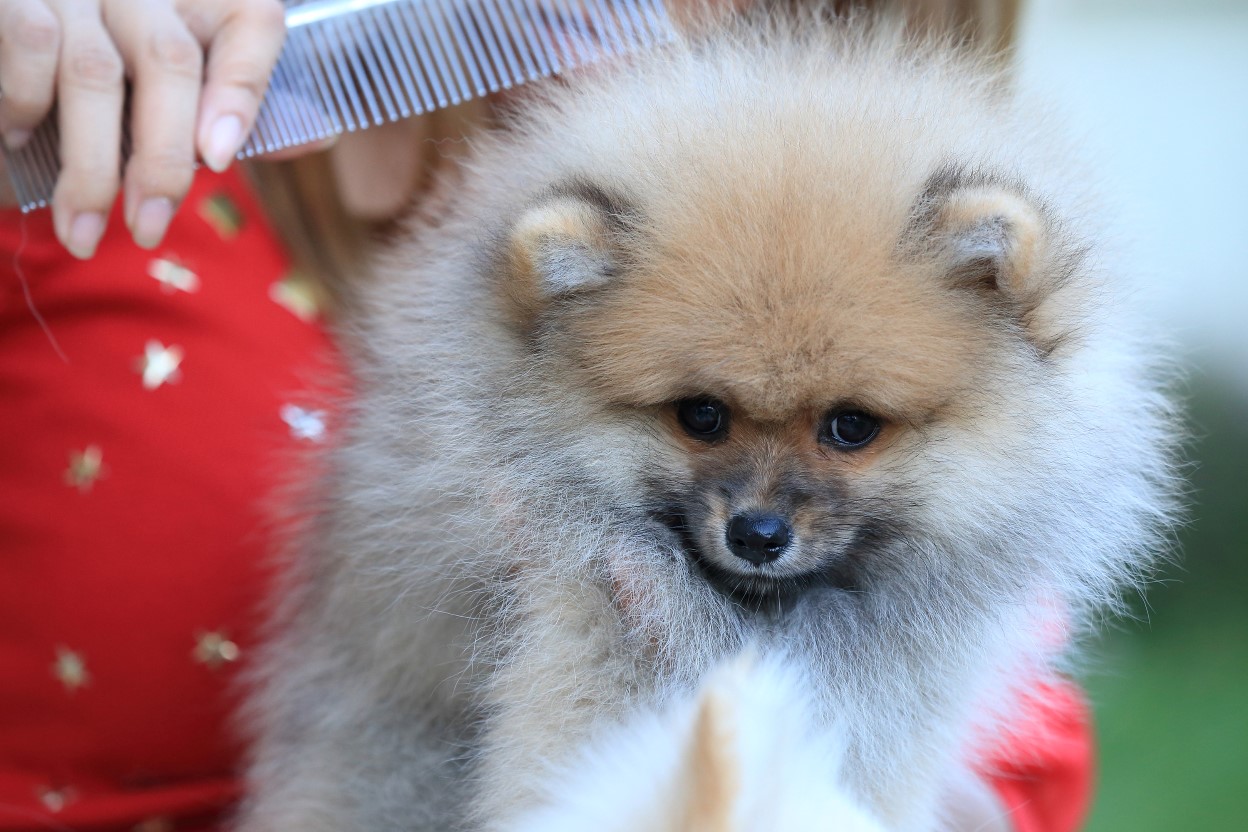The tiny shorthaired Chihuahua requires very little (no pun intended) grooming, unlike some larger breeds with thicker or longer coats. And grooming isn’t just about appearances – grooming is an essential part of a dog’s healthcare, especially for the following breeds.
Afghan hound
The Afghan hound’s smooth, silky coat can become matted easily – even between its toes! Mats can cause severe skin irritation and infection, so regular brushing is a must for Afghans. The Afghan Hound Club of America says owners should never brush a dry or dirty coat. The dog should be washed first, then gently brushed while the coat is wet.
This dog’s long ear hair often dips into water or food bowls at mealtime. To keep ears dry and clean, owners can consider using a snood – a soft tubular covering that holds the ears back when eating.
Siberian husky
The Siberian husky has a double coat, with a thick undercoat that falls out in large clumps over the course of many weeks, when outside temperatures begin rising. The undercoat can be removed with a rake-like brush, when the coat is dry. Huskies rarely need to be bathed, but when they have a bath, the coat should be blow-dried.
Bloodhound
Bloodhounds have sensitive skin, and they must be washed at least once a month to prevent bacteria from accumulating in their skin folds. Ears may be prone to infection, because they drag on the ground when a bloodhound is sniffing around. Cleaning the undersides and insides of dog’s ears using special ear cleaning lotion can prevent ear infections. After bathing, it’s important to make sure the skin folds are completely dry.
Bichon frise
The bichon frise is known as a breed that doesn’t shed much, but it does release dead hairs; those hairs just get trapped in its fluffy coat. Daily brushing is recommended for bichons, using a pin brush to lift dead hairs up and out of the coat. Once per month, bichons should visit a groomer for bathing and trimming.
Pomeranian
Like the bichon frise, the Pomeranian has a poofy coat that traps dead hair. The coat is also fragile and easily damaged by brushing and combing. A leave-in coat spray should be used before grooming, to allow combs and brushes to gently pass through the fur.
Pomeranians are notoriously skittish about having their nails trimmed, but unless trimmed every two to three months, nails may become ingrown. A professional groomer can take care of this task, reducing stress for owners and their dogs.

